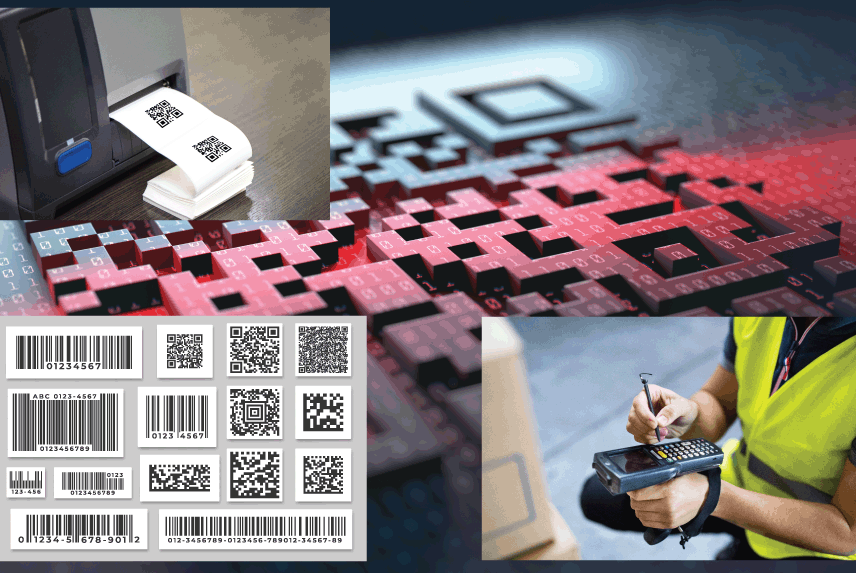
Thanks to barcode technology, supermarket shopping has never been quicker or simpler. You must have noticed the zebra stripes in black and white on everything, from cornflakes to library books. However, have you ever paused to consider how they operate?
In this post you will find out what they are, how they differ, why they are useful, and how they can help you.
What is a Barcode and How Does it Work?
Barcodes are printed on products to quickly identify an item. Among their various applications, barcodes are frequently used in warehouses to track and manage inventory, retail stores as part of the purchasing process, and on invoices to aid in accounting.
How do barcode scanners work? Well, a laser is sent out by this scanner, and it picks up the pattern.
Even though a computer can outperform the human brain in many areas, it can only understand binary, or base 10: 0s and 1s. This is one of the key explanations behind a barcode's appearance. Consider black and white as 0s and 1s, or on and off.
The dark sections reflect light poorly, so they are given the value 1. The white parts are recognised by the light scanner, though, and are therefore perceived as 0s.
These barcode scanners translate the geometrical patterns of lines, squares, and numbers into binary code, which can subsequently send information directly to Excel, Accel, and POS (point of sale) software. Consequently, they are an essential instrument for managing inventories and carrying out sales.
What Are the Components of Barcode Scanners?
The scanner itself includes a three-part method that makes it easier to read and transfer the data from a barcode.
Illumination System
The barcode needs to be lighted in order to read the code and send the image back to be processed. In the past, conventional bulbs were utilised for this. Now, barcode scanners will come equipped with LED or laser illumination systems.
Sensor or Lens
The image is captured, and a light sensor known as a "photodiode" transforms it into an appropriate electrical signal. It resembles a reverse LED in appearance and operation, collecting light and directing it into a wire.
The Decoder
Many contemporary barcode scanners have decoders incorporated right into the gun's handle. These decoders take the binary code that the scanner reads and turn it into information that can be used by the software you're using. A "keyboard wedge," which serves as an external decoder between the scanner's actual hardware and the computer is necessary for some scanners.
What Are the Different Types of Barcodes?
One-dimensional (1D) and two-dimensional (2D) barcodes are the two varieties.
1 Dimensional (1D) Barcodes
A product's kind, size, and colour can be stored in a series of black and white bars called 1D barcodes. On the top of the universal product codes (UPCs) on a product's packaging, you can locate 1D barcodes. This makes it possible to trace shipments delivered by delivery companies.
2 Dimensional (2D) Barcodes
Compared to 1D barcodes, 2D barcodes are more sophisticated. They can contain more details than just text, such as the cost, the quantity available, and even a picture of the item. There are several barcode scanners available that can read 2D barcodes. Lightspeed Retail POS is compatible with a number of wireless barcode scanners that support 2D barcodes, even though not all barcode scanners can read them.
Advantages of Using Barcodes
Efficient
Barcodes make it possible to convey and record information more quickly and accurately, which helps to track ongoing projects or the precise movement of assets. Locating assets, equipment, commodities, or anything else that moves within a place or between businesses can take a lot of time. Because you can trace an item's location, barcodes can expedite operations and enhance tracking of these things, saving your organisation time when responding to questions and changes.
Reduces Errors
Clerical and data entry mistakes can cause a business irreparable harm, resulting in greater expenses, dissatisfied customers, and a significant amount of effort spent trying to iron out issues. Errors can have a lasting negative impact on a company's brand and image, and they frequently have legal repercussions. Using barcodes greatly reduces the risk of human error.
Reap the Benefits of Barcodes with Label Source
Here at Label Source, we provide a comprehensive range of barcode labels for all purposes. Our printed barcodes are supplied in rolls or sheets, and they can have static or variable number sequences depending on your requirements. Check them out!